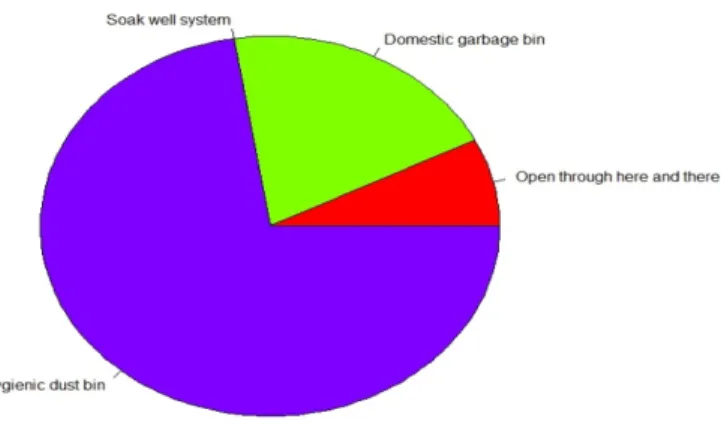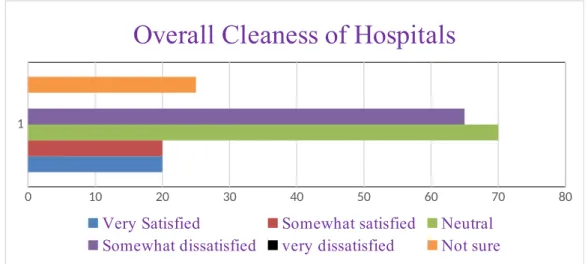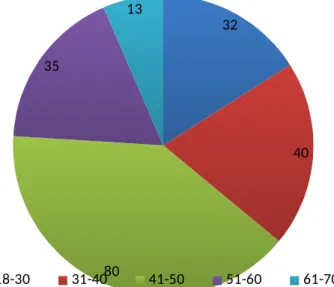In this study, we investigated the effect the healthy city program has on citizens' satisfaction. We analyzed the structural relationship between the healthy city program and happiness using quality of life as a parameter. This study attempted to empirically analyze the structural causality between the Sund By program and the citizens' happiness index through quality of life.
For this purpose, the Healthy City program was used as an independent variable, and the happiness index was used as a dependent variable. Quality of life was chosen as a parameter to mediate the Healthy City program and the happiness index. The Healthy City program seeks to positively change people's lifestyles by understanding the physical environment of the area and its impact on the health of the.
The participants of this study were residents participating in the Healthy City program of the Chattogram City Corporation. Since the Sund By program is based in the local community and is a citizen-led programme, it must also reflect the local reality and the citizens' level of health. The survey points of the Healthy City program were composed based on the proposed monitoring, accountability, reporting and impact assessment (Leeuw and MARI, 2006).
The aim of the Healthy City program is to promote the health of local residents; consequently, it is expected to boost the happiness index of residents.
Quality of Life
Health and happiness have a mutual influence, and the presence of illness affects abstract emotions such as happiness. The happiness index survey items were constructed based on previous studies assessing whether demographic and sociological factors, such as income level, marital status, education, and occupation, could influence happiness and health (Johansson, 1973, and Dolan et al . ., 2008). The happiness index measures derived from previous studies include economic stability, family interaction, interpersonal relationships, and health; Extensive validity testing has been conducted.
Furthermore, the scale used by Hervás and Vázquez Hervás and Vázquez, 2013, Kaczmarek, Bujacz, and Eid Kaczmarek et al., 2015, and others was used to measure the relationship between individuals' life satisfaction, the psychological and social environment, and happiness ( Table 1). The ultimate goal of local government lies in improving the quality of life of citizens, which should entail finding a solution to improve the quality of life of each individual. Therefore, the survey items related to quality of life based on the activities of daily living were developed (Katz et al., 1970).
Consequently, the validity and reliability of the questions were also verified Katz et al., 1970 and Kim, 2011. In addition, we tried to measure our own physical functioning, role activities, personal satisfaction with life and health status by using the EQ-5D, a measurement tool of health-related quality of life scale (Herdman et al., 1998).
Chapter-4: Result
Frequency of Health Checkup
Once in 3 months Once in 6 months Once a year Only when necessary Never get it done Other. These 40% people only seek medical health check-ups when they get sick and are advised to have a check-up by the doctor.
Source of drinking water
Physical environment of living place
Phys ical Environment Of Living Place
Surrounding condition of living place
This report found that 37.5% of the city's families have sufficient light and fresh air in their residences, 27.5% of families have experienced noise pollution, and 5% of families have some poultry or dairy farms closer to their homes .
Sanitary arrangement
Personal hygienic condition
Status of Personal hygienic System
- Garbage management system
- Medical facilities
- Vaccination facilities
- Status of chronic disease
- Status of hereditary disease
- Overall cleaness of hospital
- Overall health condition
- Total health condition
The study found that 87.5% people get the vaccination facilities from the nearest health centers and 5% people said they can easily get the vaccination facilities at their doorstep. Research found that only 15% of people have chronic diseases and the rest 85% of people do not have chronic diseases. The result shows that 52.5% of people living in this urban area have diabetes, 20% suffer from high blood pressure and 27.4% suffer from other hereditary diseases.
The study shows that 70% of people are in good physical health, 25% of people are mildly physically impaired, 1.5% of people are severely physically impaired and 1% of people are moderately physically impaired. From the result it can be seen that 64% people of Chattogram City Corporation have acute diseases and 16% of the city people have chronic diseases and 20% of the city people do not have any kind of diseases.

Number of Participants based on age
Gender of Participants
Chapter-5: Discussion
In January 1995, a new WHO Collaborating Center for Urban Health was designated in South Africa, and its staff are active in a renowned Healthy Cities project in Johannesburg. Collaboration between this center and the Healthy Cities Coordinator in the African Regional Office will support the development of a regional network of Healthy Cities. In addition, in the US there is a Healthy Cities Network in Indiana, established and coordinated through the University of Indiana School of Nursing (also a WHO Collaborating Centre), a Californian Network and a Quebec Healthy Cities and Towns Network.
In 1990, the WHO Regional Office convened a conference on Healthy Cities in Cairo, which formulated an overall strategy for the region to focus on improving city and environmental health through integrated environmental management. Tunis is the Coordinator of a Maghreb Healthy Cities network that includes four Healthy Cities in Algeria. The First Healthy Cities Conference in the Gulf States was held in November 1994 in Dubai and is expected to lead to a network of Healthy Gulf Cities.
One of the region's renowned institutions in the field of urban health and environment can be designated as WHO Collaborating Center on Healthy Cities. The first WHO Healthy Cities Project involving 30 cities from 16 countries was successfully implemented from 1987 to 1992. Only a small proportion of cities participating in Healthy Cities in Europe have designated cities (about 35 out of 600), and the non-designated cities these are considered part of a "movement" rather than WHO project cities.
In response to Healthy Cities initiatives in several countries, including Bangladesh, Nepal and Thailand, the WHO Regional Office is developing a Healthy Cities programme, which will be a collaborative effort of the Program on Environmental Health and the Program on Health Promotion and Protection. A Healthy Cities Project has been launched in Nepal, covering three municipalities and directly linked to the World Bank's Metropolitan Environment Improvement Program (MEIP) for Kathmandu. A significant feature of Healthy Cities' work in Bangladesh and Thailand is the detailed evaluation being undertaken in collaboration with the London School of Hygiene and Tropical Medicine and London South Bank University.
In this region, the Environmental Health Center (EHC) and the Regional Office have done a lot of work on urban health, and there is an increasing demand for work on health in cities of the healthy city type, for example in China, Malaysia and Vietnam. While there are long established Healthy Cities programs in Japan, Australia and New Zealand, it is expected that the newly developed program in several Malaysian cities (Johore Bahru, Kuching) may become a model for the region. The WHO Regional Workshop on Urban Health and Environmental Management in Johor Bahru, Malaysia in May 1995 showed reasonable progress in healthy cities work in several cities and improved cooperation between the various external support agencies working at the city level, including Habitat, UNDP, WHO and World. Bank.
Chapter-6: Recommendation and Future perspectives
Chapter-7: Conclusion
Research Questionnaire
Roles of WHO Healthy city Program improving environment and public health
- Do you have any chronic diseases?
- Do you have any hereditary conditions/diseases?
- Are you habitual to drugs and alcohol?
- How would you evaluate your overall health? Would you say you are
- When making health care decisions for your family, who is the primary decision maker?
- What is the source of your drinking water?
- Physical Environment of the Living place is o Dry
- Surrounding Environment of the Living place is
- What types of sanitary arrangement is used?
- Is Basic needs of all members of the family met?
- Total health condition of all family member is o Suffering from acute disease
- Medical Facility’s Opportunity is
- Vaccination Facilities’ is o Easily Available at the door
- Personal hygienic System is o Always maintain
- Does the hospital you regularly visit have equipment for modern diagnosis and treatment?
- Does the hospital have modern operating room facilities?
- Overall cleanliness of the hospital is Very satisfied
- Efficiency of nursing care is Very satisfied
- Friendliness and courtesy of staff are Very satisfied
- Cost of health care is Very satisfied
You have only minor illnesses and/or disabilities which may benefit from medical treatment or remedial measures.). You have one or more illnesses or disabilities that are either painful or require significant medical treatment.). You have one or more illnesses or disabilities that are either very painful or life-threatening, or that require extensive medical treatment.).
Bedridden and requiring full-time medical or nursing care is . to maintain vital body functions). Overall state of health for all family members iso Suffering from an acute illness o Suffering from an acute illness.
Towards the Healthy City: People, Places and Urban Planning Policy (Urban and Industrial Environments) (Illustrated edition). In Proceedings of the A Framework for Networks of Healthy Cities, presented at the Business Meeting of the WHO Network of European National Networks of Healthy Cities, Turko, Finland, 18-21 October 2006. Construction and validation of a measure of well-being integrative in seven languages: The Pemberton Happiness Index.
Comparative analysis of latent state–trait satisfaction with life Measures: Steen Happiness Index and Life Satisfaction Scale. Health Impact Assessment as a Strategy for Intersectoral Collaboration. Journal of Preventive Medicine and Public Health. Age and gender differences in the association of chronic diseases with activity of daily living (ADL) disability in South Korean elderly: Based on representative data.
Measuring quality of life and constructing social indicators. Handbook of social indicators and quality of life research, 201-238.

